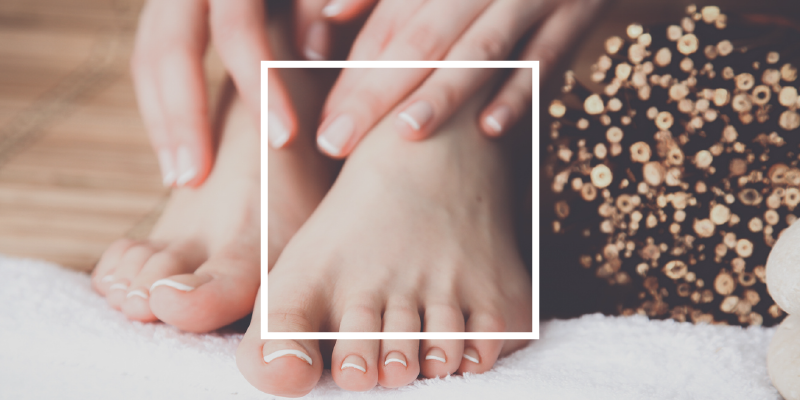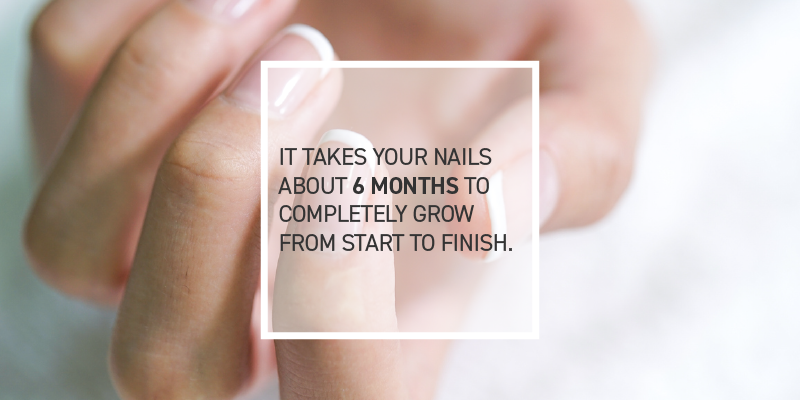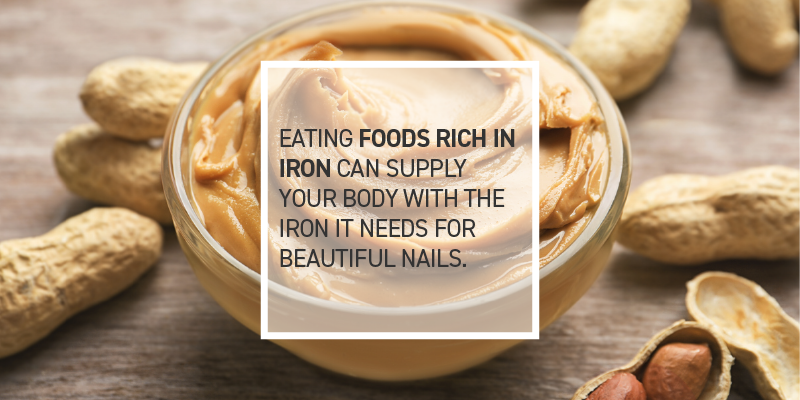
You probably only think about your fingernails when you break one, or when all of your friends are admiring the colorful result of your latest trip to the nail salon. Beautiful nails definitely seem to be a contributor to stature. Your nails come in handy when you need to peel apart a sticker or separate a few pieces of paper. They’re especially appreciated when you’re able to reach that pesky itch in the middle of your back.
But how often have you really looked at your nails? Critically? Naked. Not you! I mean, looking at your bare, natural nail. Appraised the color, texture, markings, changes.

Your eyes may be the window to your soul, but your nails most definitely are the window to your overall health. They show us exactly how well you are or aren’t eating. Your diet is directly reflected in those little claws.
“Your nails are a very good reflection of your health. Many things can occur in the nails that can signify systemic or skin problems,” says Christine Poblete-Lopez, MD, Assistant Program Director in the Department of Dermatology at the Cleveland Clinic. Often times, metabolic disturbances start to show up in your nails way before you notice symptoms anywhere else. Sounds a bit far-fetched? Ask Tamara Lior, MD, a dermatologist with Cleveland Clinic Florida. Lior says she once convinced a patient to have his lungs checked after noticing a bluish tint to his nails, a sign that he wasn’t getting enough oxygen. Sure enough, he had fluid in his lungs.
Judging Your Nails

Take a really good look at your fingernails, and you’ll notice subtle variations in things like color or texture. Each mark means something, from the little bit of white to the rosy tinge in that one spot. You may even notice some rippling or bumps on the surface.
It takes your nails about 6 months to completely grow from start to finish. That’s about ⅛ inch per month. As a result, your fingernails are constantly giving you an updated view of your body’s health.
You should be regularly taking a good look at your nails and questioning your dermatologist if you see anything out of the ordinary. Pay attention to anything on or around your fingernails or toenails that suddenly appears different, Poblete-Lopez says. “Anything that doesn’t look normal ought to be addressed. Your best course of action is to see a doctor as soon as possible.”
- Look closely at color. Any changes in the color of your nails (not added by your favorite artist)? Is the color uniform throughout, or are there spots or lines of color?
- Look at the shape. Any changes in how your nail sits on your finger? Is it becoming rounded up like a turtle (called clubbing), cracked and brittle, are there ridges or pits forming?
Here are just a few problems you may notice in relation to your diet.
Spoon Nails (koilonychia)
Spoon nails are soft and appear to be scooped out (like a spoon). The depression can become pronounced enough to hold a drop of liquid. These are often a sign of iron deficiency anemia or a liver condition known as hemochromatosis, in which your body absorbs too much iron from the food you eat. Protein deficiency can also play a role in this condition.
Beau’s Lines
These are indentations that run across the nails. They can appear when growth under the cuticle is interrupted by injury or severe illness; a temporary halt in nail growth. Beau’s lines can be associated with uncontrolled diabetes. They can also be a sign of severe zinc deficiency.
Brown-Gray Discoloration and Faint Moons
Seeing the two of these often coincides with low vitamin B12 levels. You may also see ridges along with these symptoms. Good vitamin B12 levels produce white moons at the base of each fingernail. When levels are low, the thumb’s moon is last to go. If your moons have greatly faded or disappeared, you may also be noticing the following signs that you’re running short on B12:
- Tingling in hands and feet
- Numbness
- Memory problems
- Exhaustion
- Depression
- Bleeding gums
- Restless leg syndrome
- Balance problems
- Diarrhea
White or Pink Nail Color Changes
White nails can be the result of anemia, and pink nails may suggest malnutrition with several nutrient and vitamin deficiencies. Additionally, biotin deficiency can increase the risk of fungal nail infections and subsequent nail plate discoloration.
Eating Well for Healthy Nails

Having healthy fingernails can be as easy as eating a nutrient-rich diet. Preventing underlying conditions that impact your nails isn’t always possible, Dr. Poblete-Lopez says, but you can care for your nails by staying hydrated and eating a well-balanced diet. Be sure you’re consuming enough B vitamins and zinc because those nutrients greatly strengthen your nails.
- Eating foods rich in iron (green veggies, lean red meat, peanut butter) can supply your body with the iron it needs for beautiful nails. If your diet alone isn’t enough to satisfy your body’s needs, you may need to discuss supplementation with your dermatologist.
- Eating foods rich in zinc (beef, seafood, zinc-fortified cereal) is also important to maintain healthy nails. It can also commonly be found in multivitamins and immune-support supplements.
- Eating foods rich in vitamin B12 (beef, clams, oysters, tuna, milk) assists fatty acid and amino acid metabolism, both essential for healthy skin and nails.
Eating foods rich in biotin (egg yolks) will help your body build keratin, which makes up your nails.
Skin Care Tips From MDSUN Skin Care®
Please Visit Our Official Website - MDSUN Skin Care



Comments
Post a Comment